Activism
Over 500 Attend Police-Free Event to Reimagine Safety in Oakland
Night Out for Safety and Liberation started in 2013 by the Ella Baker Center for Human Rights in response to the murder of Trayvon Martin by a neighborhood watch captain and is held as an alternative to the police-centric National Night Out. Since 2013, the event has spread across the country with over 50 events scheduled this year where communities make the night about the power of community, not cops.
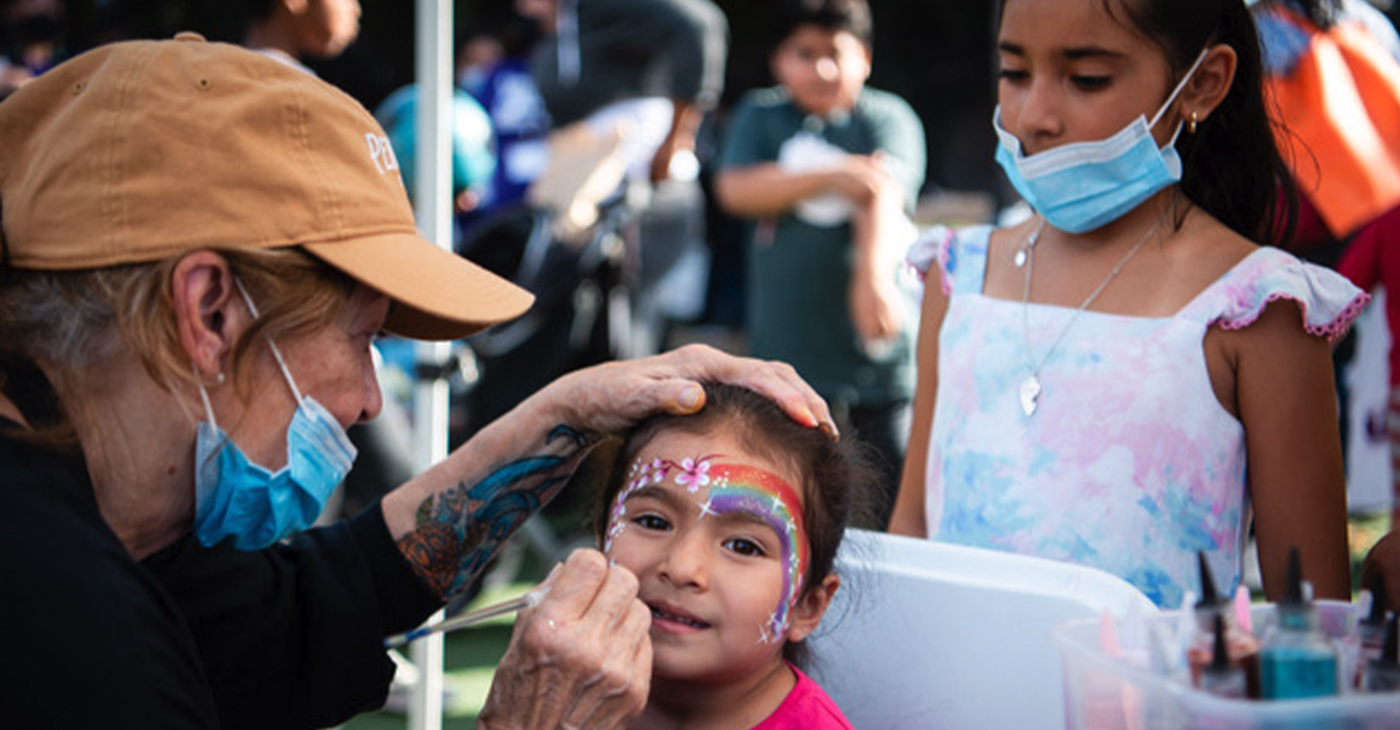
Night Out for Safety and Liberation Events Held in More Than 50 Communities Across the Country
Photos courtesy of Ella Baker Center, photography by Brooke Anderson
OAKLAND, CA — Over 500 people and families filled Josie de la Cruz Park in Oakland’s Fruitvale neighborhood on Aug. 2 to enjoy performances, kids activities, and mutual aid to celebrate Night Out for Safety and Liberation (NOSL), an annual national event that redefines what safety and joy is without policing. The free community event included free diapers and books for all ages, food, bike giveaways, air purifiers, self defense training, a drag show, and performances from poets and artists such as Lauren Adams, TJ Sykes and Voces Mexicanas.
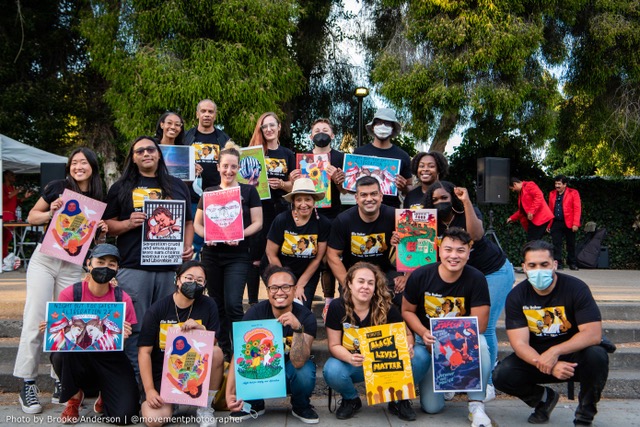
Photos courtesy of Ella Baker Center, photography by Brooke Anderson
Night Out for Safety and Liberation started in 2013 by the Ella Baker Center for Human Rights in response to the murder of Trayvon Martin by a neighborhood watch captain and is held as an alternative to the police-centric National Night Out. Since 2013, the event has spread across the country with over 50 events scheduled this year where communities make the night about the power of community, not cops.
“We have been reimagining what safety means beyond police for our communities for over 25 years at the Ella Baker Center. When we create safe spaces for our community to come together and support each other, when we provide living-wage jobs so people are able to put food on their table, when we empower our children and provide opportunities for them to thrive, when we invest in healthcare and mental health resources, this is how we create real safety,” said Marlene Sanchez, Executive Director of the Ella Baker Center.
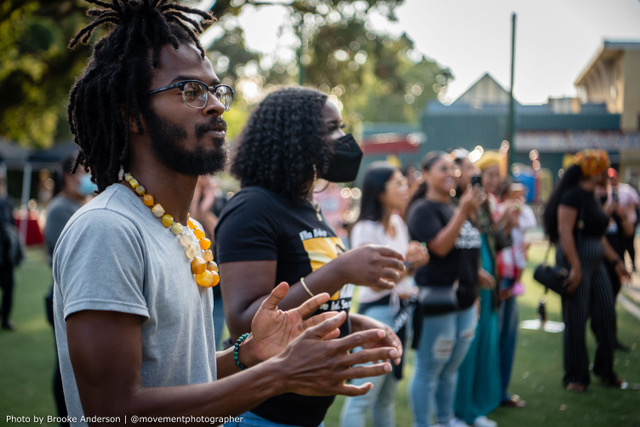
Photos courtesy of Ella Baker Center, photography by Brooke Anderson
Through Night Out for Safety and Liberation, communities are creating safety not through policing but through healing and restorative justice, through creating gender affirming spaces and protecting trans and LGBTQIA communities, through reinvesting funding into community-based alternatives and solutions that truly keep communities safe.

Photos courtesy of Ella Baker Center, photography by Brooke Anderson
“We don’t need more police in our streets. We don’t need more surveillance. What we need is resources!” said Jose Bernal, Organizing Director with the Ella Baker Center. “What we need is housing, diapers, legal resources, jobs. This [Night Out for Safety and Liberation] is what keeps us safe. This is resilience.”
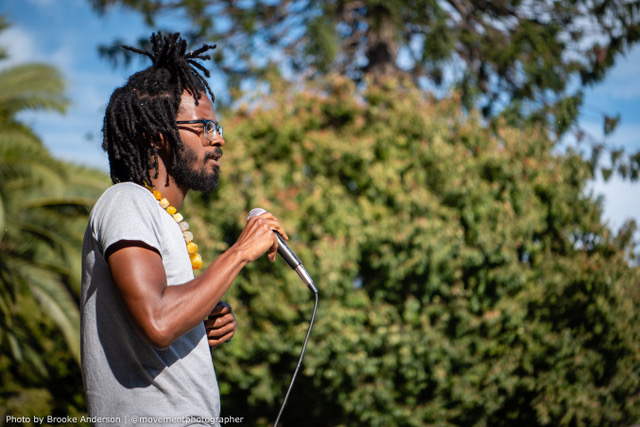
Photos courtesy of Ella Baker Center, photography by Brooke Anderson
The event was emceed by Nifa Akosua, Senior Organizer and Advocate with the Ella Baker Center, and TJ Sykes, author and community activist–both natives of Richmond, California. The show included entertaining performances from Oakland Originalz break dancers, Voces Mexicanas mariachi band, singer Lauren Adams and a drag show from Afrika America.
“Night Out for Safety and Liberation is about neighborhood love and neighborhood safety. It’s about connecting, showing up for each other and staying connected as a community. That’s how we keep each other safe,” said Nifa.
More than 20 organizations and vendors participated in Tuesday’s event, offering community resources, face painting, giving away 500 books for all ages, and free diapers. Those participating included: Help A Mother Out, Mujeres Unidas y Activas, ACLU of Northern California, TGI Justice Project, Urban Peace Movement, Ella Baker’s Readers & Cesar Chavez Public Library, Alliance for Girls, Bay Area Women Against Rape, Centro Legal de la Raza, Common Humanity Collective, Street Level Health Project, Malikah – Self Defense, East Bay Community Law Center, Unity Council, Young Women’s Freedom Center, East Bay Family Defenders, Bay Area Workers Support, L’Artiste A La Carte, Education Super Highway, Cut Fruit Collective, and WIC.
Other Night Out for Safety and Liberation events were held in Oakland, San Francisco, Chicago, Portland, Phoenix, Denver, Minneapolis, Atlanta, St. Louis, Dallas, Houston, Waco, Hampden, Conway, Washington D.C. and other cities. Follow the conversation and see photos from events in other cities using #SafetyIs and #NOSL22.
Activism
Oakland Post: Week of July 24 – 30, 2024
The printed Weekly Edition of the Oakland Post: Week of July 24 – 30, 2024
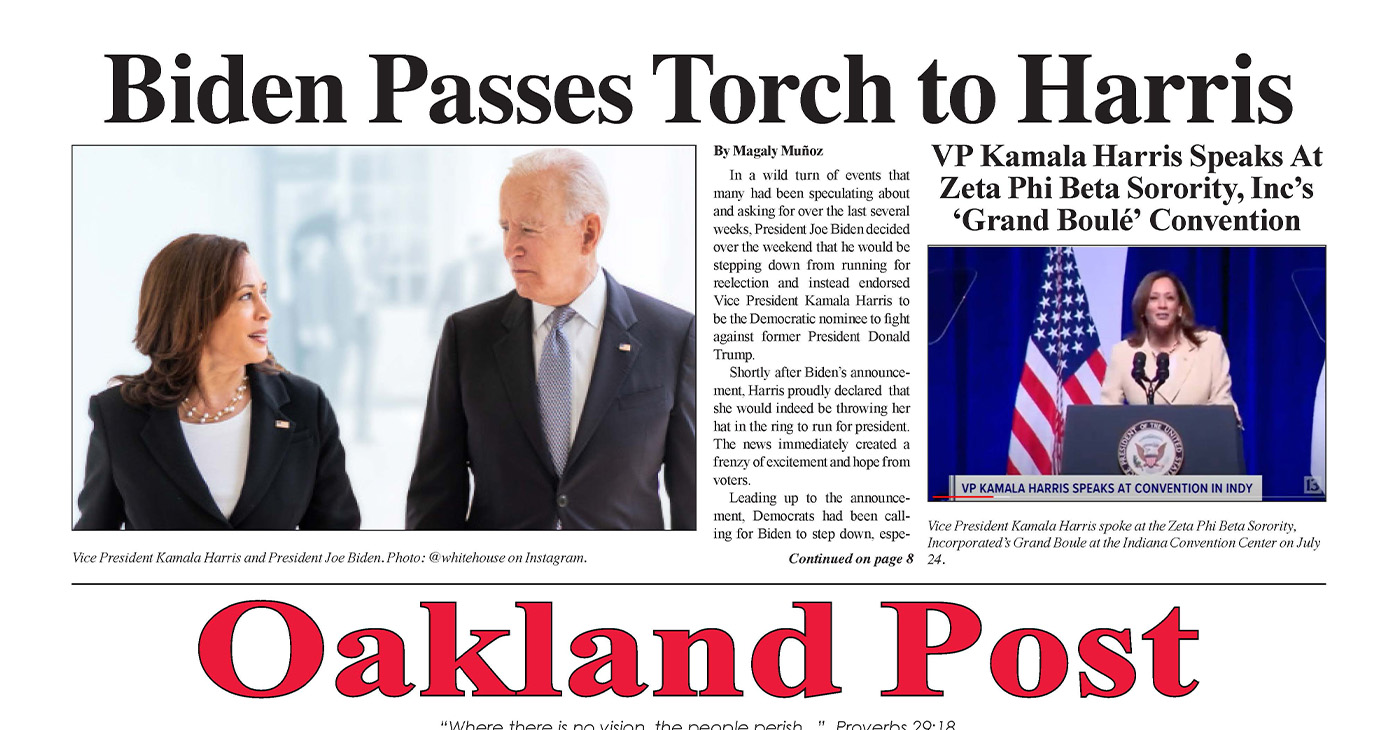
To enlarge your view of this issue, use the slider, magnifying glass icon or full page icon in the lower right corner of the browser window. ![]()
Activism
Oakland Post: Week of July 17 -23, 2024
The printed Weekly Edition of the Oakland Post: Week of July 17 -23, 2024

To enlarge your view of this issue, use the slider, magnifying glass icon or full page icon in the lower right corner of the browser window. ![]()
Activism
Community Celebrates Historic Oakland Billboard Agreements
We, the Oakland Billboard Economic Development Coalition, which includes Oakland’s six leading community health clinics, all ethnic chambers of commerce, and top community-based economic development organizations – celebrate the historic billboard agreements approved last year by the Oakland City Council. We have fought for this opportunity against the billboard monopoly, against Clear Channel, for five years. The agreements approved by Council set the bar for community benefits – nearly $70 Million over their lifetime, more than 23 times the total paid by all previous Clear Channel relocation agreements in Oakland combined.

Grand Jury Report Incorrect – Council & Community Benefit
We, the Oakland Billboard Economic Development Coalition, which includes Oakland’s six leading community health clinics, all ethnic chambers of commerce, and top community-based economic development organizations – celebrate the historic billboard agreements approved last year by the Oakland City Council. We have fought for this opportunity against the billboard monopoly, against Clear Channel, for five years. The agreements approved by Council set the bar for community benefits – nearly $70 Million over their lifetime, more than 23 times the total paid by all previous Clear Channel relocation agreements in Oakland combined.
Unfortunately, a recent flawed Grand Jury report got it wrong, so we feel compelled to correct the record:
- Regarding the claim that the decision was made hastily, the report itself belies that claim. The process was five years in the making, with two and a half years from the first City Council hearing to the final vote. Along the way, as the report describes, there were multiple Planning Commission hearings, public stakeholder outreach meetings, a Council Committee meeting, and then a vote by the full Council. Not only was this not hasty, it had far more scrutiny than any of the previous relocation agreements approved by the City with Clear Channel, all of which provide 1/23 of the benefits of the Becker/OFI agreements approved by the Council.
- More importantly, the agreements will actually bring millions to the City and community, nearly $70M to be exact, 23 times the previous Clear Channel relocation agreements combined. They certainly will not cost the city money, especially since nothing would have been on the table at all if our Coalition had not been fighting for it. Right before the decisive City Council Committee hearing, in the final weeks before the full Council vote, there was a hastily submitted last-minute “proposal” by Clear Channel that was debunked as based on non-legal and non-economically viable sites, and relying entirely on the endorsement of a consultant that boasts Clear Channel as their biggest client and whose decisions map to Clear Channel’s monopolistic interests all over the country. Some City staff believed these unrealistic numbers based on false premises, and, since they only interviewed City staff, the Grand Jury report reiterated this misinformation, but it was just part of Clear Channel’s tried and true monopolistic practices of seeking to derail agreements that actually set the new standard for billboard community benefits. Furthermore, our proposals are not mutually exclusive – if Clear Channel’s proposal was real, why had they not brought it forward previously? Why have they not brought it forward since? Because it was not a real proposal – it was nothing but smoke and mirrors, as the Clear Channel’s former Vice President stated publicly at Council.
Speaking on behalf of the community health clinics that are the primary beneficiaries of the billboard funding, La Clinica de la Raza CEO Jane Garcia, states: “In this case, the City Council did the right thing – listening to the community that fought for five years to create this opportunity that is offering the City and community more than twenty times what previous billboard relocation agreements have offered.”
Oakland Billboard Economic Development Coalition
| Native American Health Center | La Clínica de la Raza | West Oakland Health Center |
| Asian Health Services | Oakland LGBTQ Center | Roots Community Health Center |
| The Unity Council | Black Cultural Zone | Visit Oakland |
| Oakland African American Chamber of Commerce | Oakland Chinatown Chamber of Commerce | Oakland Vietnamese Chamber of Commerce |
| Oakland Latino Chamber of Commerce | Building Trades of Alameda County | (partial list) |
-

 Arts and Culture3 weeks ago
Arts and Culture3 weeks agoRooted in Tradition: The Intricate History of Black Hair Braiding
-

 Bay Area4 weeks ago
Bay Area4 weeks ago“I Will Not Be Bullied,” Says Oakland Mayor Sheng Thao
-

 Bay Area2 weeks ago
Bay Area2 weeks agoPG&E Increases Rates While Bay Area Households Are Struggling to Stay Afloat
-

 Business3 weeks ago
Business3 weeks agoGov Newsom: Raising Fast Food Minimum Wage to $20 Pays Off as Jobs Multiply in Industry
-

 Activism4 weeks ago
Activism4 weeks agoOpponents of Mayor Sheng Thao Are Calling on Her to Resign Following FBI Raid
-

 Community1 week ago
Community1 week agoHundreds Come to Jehovah’s Witnesses’ Assembly Hall for Three-Day Program of ‘Good News’ in Fremont
-

 Bay Area2 weeks ago
Bay Area2 weeks agoJuneteenth Mass Shooting Suspect Charge with Multiple Counts of Felony Assault by Alameda County DA Pamela Price
-

 Activism4 weeks ago
Activism4 weeks agoOakland Coliseum Sale to AASEG: A Model for Community Development and Inclusion




















































